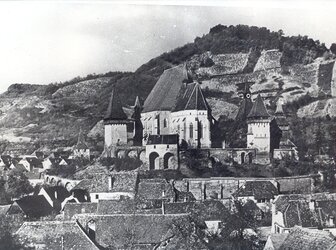Wooden Church of Urși Village, Vâlcea County
This wooden church, found in the cemetery of the small village of Urși, has been carefully restored with the close involvement of many partners including the local community. The main partners involved were the Pro Patrimonio Foundation, the Art Conservation and Restoration ...
Read more
Project details
Description:
This wooden church, found in the cemetery of the small village of Urși, has been carefully restored with the close involvement of many partners including the local community. The main partners involved were the Pro Patrimonio Foundation, the Art Conservation and Restoration Department of the National Arts University of Bucharest, the ASTRA Museum of Traditional Folk Civilization, the National Institute of Physics and Nuclear Engineering “IRASM”, the National Chamber of Romanian Architects, Asociația 37 and the owner of the church, the Romanian Orthodox Church. The project would not have been possible without the voluntary work of Urși’s community, who provided food, accommodation, access to electricity, labour and transportation, as well as the in-kind work from national and international volunteers who helped with the conservation works. The funding for the project was provided by the International Music and Art Foundation, the World Monuments Fund, the Headley Trust, Holcim Romania, online crowdfunding and the European Investment Bank Institute along with several private donors. The Wooden Church of Urși Village, dedicated to the Annunciation and the Archangel Michael, was built between 1757 and 1784. Though it survived a fire in 1838, after which it was repaired and decorated with frescoes, the church was later abandoned following the construction of a new church in the village. On its rediscovery in 2007, the church lay without a foundation and was at risk of collapse while its shingle roof was in urgent need of repair. The frescoes, painted in the Post-Byzantine tradition with Western influences and of remarkable artistic value, faced serious decay. In 2009, the church of Urși was included in the “60 Wooden Churches programme” in Romania by the Pro Patrimonio Foundation, and thus later nominated to the 7 Most Endangered programme 2014. From 2009 to 2020, the restoration works took place each summer following months of fundraising efforts in the preceding year. The restoration site itself was an open one, functioning as an educational space to raise awareness about the value of the church, its wooden construction technique, the fresco technique and the content of the mural iconography, icons and iconostasis.
Similar projects

1757 - 1784

13th-14th century

10th-11th century

1930

18th-19th century

17th century

1937-1938

17th century

15th century










